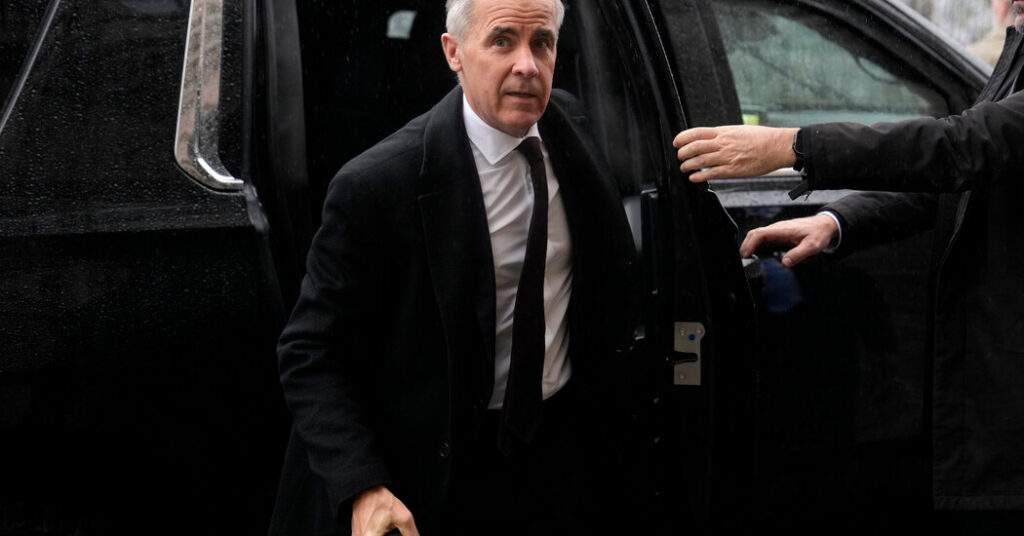In a tacit acknowledgment that a trade deal with the United States is increasingly unlikely, Prime Minister Mark Carney of Canada introduced several measures on Wednesday to keep afloat two industries severely harmed by President Trump’s flurry of tariffs: steel and lumber.
Mr. Carney’s move includes a new tariff on steel products, a reduction in the amount of foreign steel allowed into the country and a lowering of costs to move lumber and steel by rail.
The introduction of the measures was a stark reversal from just over a month ago, when it appeared that Mr. Carney and Mr. Trump would sign an accord on steel and aluminum during a meeting in South Korea.
But Mr. Trump cut off talks after Ontario broadcast a television commercial in the United States that featured former President Ronald Reagan criticizing tariffs.
Mr. Trump also said at the time that he was imposing an additional 10 percent tariff on Canadian exports, though he has yet to follow through on the threat.
“This government will do whatever it takes to protect our sectors,” Mr. Carney told a news conference. “Not just protect them, but to help them reposition for the new global economy.”
Mr. Carney’s government said on Wednesday that it would slash the amount of steel allowed into the country from nations that do not have a free-trade agreement with Canada, like China.
The government will also subsidize railways to reduce by half the cost of shipping steel and lumber within Canada.
Mr. Carney said that Canada would impose a 25 percent tariff on largely steel products like prefabricated buildings, wire and fasteners. Officials estimated that about 40 percent of those products come from the United States. Canada has a separate 25 percent tariff on American steel.
A program that allows farmers and food-processing businesses to receive steel duty refunds will be shut down at the end of January. Officials said that the government expected farmers and affected businesses to find ways to buy Canadian steel and steel products by that point. It committed $100 million to retraining steel and lumber workers who are working fewer hours because of reduced demand.
A majority of Canadian products still enter the United States tariff-free despite Mr. Trump’s levies, because they qualify under the free-trade deal between the United States, Mexico and Canada.
But that does not apply to separate tariffs of up to 50 percent that Mr. Trump applied to steel, aluminum, automobiles and softwood lumber, which is typically used in home building.
“Of course we want to further improve the existing trading relationship with the United States,” Mr. Carney said. “We stand ready to re-engage when they are. But, at the same time, we’re going to do a few other things.”
After becoming prime minister in March, Mr. Carney announced that he intended to resolve Canada’s trade dispute with the United States. He lifted most of the retaliatory tariffs against the United States that had been imposed by Justin Trudeau, Mr. Carney’s predecessor, and ended a tax on the operations of large American tech companies in Canada.
The results have been uneven. Last month, Canadian officials were optimistic about working out a deal on steel and aluminum after Mr. Carney and Mr. Trump met at the White House. But the president was adamant about not budging on the auto tariff.
But later, Mr. Carney found himself apologizing to Mr. Trump for the TV ad, which he had asked Ontario not to run, during a dinner at a summit in South Korea.
Since then Mr. Carney and his officials have largely shifted to talking about finding new markets for Canadian exports rather than negotiating with Mr. Trump.
On Tuesday, Mr. Carney was apologizing again, this time to the House of Commons for saying “Who cares?” after a reporter asked him earlier in the week when he would next speak with Mr. Trump.
Mr. Carney said on Wednesday that he had spoken to Mr. Trump on Tuesday, but added that the exchange was “not newsworthy” and noted that no talks were underway between the two countries.
He also announced that he would travel to Washington as the political head of a host nation for the upcoming World Cup. The gathering would also include Mr. Trump.
The aluminum industry has been the least affected by the tariffs since it has relatively few competitors in the United States and trades widely throughout the world.
Mr. Carney’s announcement did not include any new auto measures. Since the tariffs, Stellantis announced that it was moving production of a new Jeep model from suburban Toronto to Illinois despite receiving large Canadian subsidies. General Motors closed an electric van plant in Ontario, and it will cut a shift at a pickup truck factory in the province in January.
Ian Austen reports on Canada for The Times. A Windsor, Ontario, native now based in Ottawa, he has reported on the country for two decades. He can be reached at [email protected].
The post As Hopes for a Trade Deal With Trump Vanish, Canada Tackles Tariff Fallout appeared first on New York Times.




